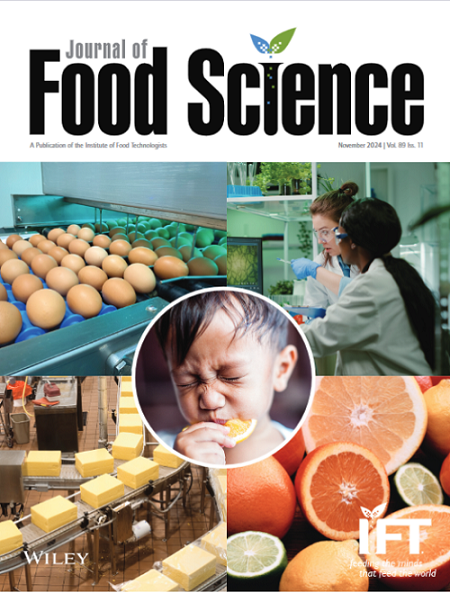Influence of Lactobacillus and yeast on antioxidative, antidiabetic, and anti-inflammatory attributes of camel milk and Gir cow milk as well as release of bioactive peptides: A comparative study
Abstract
The aim of the study is to explore the biofunctional properties (antioxidative, anti-diabetic, and anti-inflammatory) with the release of bioactive peptides from fermented camel milk and Gir cow milk through yeast-lactic fermentation. Fermented camel milk and Gir cow milk exhibited higher antioxidative, antidiabetic, and anti-inflammatory activities compared to their unfermented counterparts. At 30°C, the most significant production of peptides had been discovered at 48 h of incubation with 2.5% rate of inoculation of yeast-lactic culture in the fermented milks of camel and Gir cow. Additionally, both the fermented milks considerably reduced the overproduction of TNF-α, IL-6, IL-1β, and nitric oxide in RAW 267.4 cells. Confocal laser scanning microscopy revealed the visualization of protein biomolecules of camel milk and Gir cow milk pre- and post-fermentation, revealing changes in protein network structure. The structural changes that occur during fermentation were examined using Fourier-transform infrared spectroscopy by assessing changes in functional groups after fermentation. To distinguish between different peptide fractions, reversed-phase high-performance liquid chromatography was used for comparing water-soluble extracts of ultra-filtered fractions. The Peakview tool was implemented to assess the liquid chromatography-mass spectrometry (LC/MS) data. However, fermenting camel and Gir cow milk with yeast and lactic acid bacteria enhances their nutritional and therapeutic values by releasing bioactive compounds, improving antioxidative, antidiabetic, and anti-inflammatory activities, and this process supports gut health, immunity, and sustainability, offering potential for functional foods and nutraceutical innovations.
Practical Application
Traditionally, camel and Gir cow milk provide health benefits beyond nutrition for the well-being of the society since long. Fermented Gir cow and camel milk contain physiologically bioactive peptides. Gir cow and camel milk fermented with Limosilactobacillus fermentum (KGL4) in combination with Saccharomyces cerevisiae (WBS2A) also provide antidiabetic and antioxidative activities. Anti-inflammatory activity of fermented Gir cow and camel milks was also observed in RAW 264.7 macrophage cell. Antidiabetic and antioxidative peptides were also identified from fermented Gir Cow and camel milks. However, functional fermented dairy products can be developed using these two potent strains in combination for providing better health benefits.

 求助内容:
求助内容: 应助结果提醒方式:
应助结果提醒方式:


